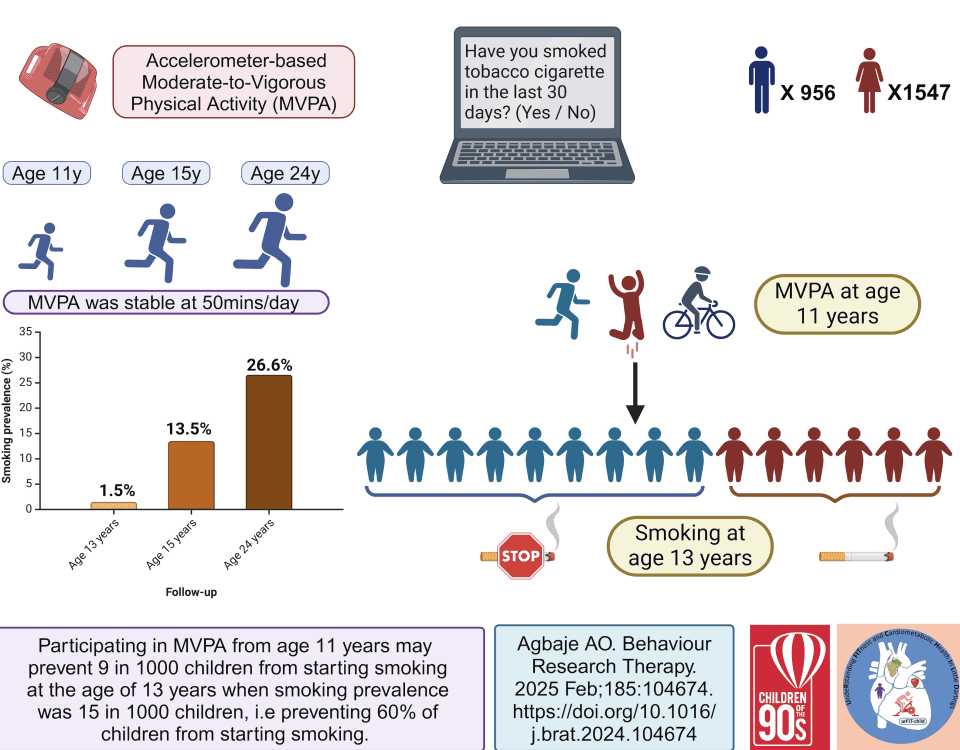
Physical Activity, Screen Time and Sleep of Canadian Children and Youth During the COVID-19 Pandemic
August 20, 2020
Worldwide surveillance of self-reported sitting time: a scoping review
September 3, 2020Today’s blog is provided by Dr. Navjot Pachu describing his new study titled “University students’ knowledge, self-efficacy, outcome expectations and barriers related to reducing sedentary behaviour: A qualitative study“. The study was recently published online ahead of print in the Journal of American College Health and is available here. Citation details and more about the author of the blog (lead author of the paper) can be found at the bottom of this post.
Background
High levels of sedentary behaviour are associated with detrimental health outcomes.1,2 University students have been identified as a population subgroup at risk of accumulating high volumes of sedentary time. Systematic review evidence suggests that undergraduates spend 10-11 hours per day sedentary.3 While interventions to reduce sedentary behaviour in university students have been developed and tested,4–6 limited evidence exists on psychological variables that influence sedentary behaviour in university students.7 To inform future interventions and strategies, more applications of psychological theories of behaviour change are needed to identify modifiable cognitive and motivational factors that influence university students’ sedentary behaviour.
Social Cognitive Theory (SCT)8 – a well established theory of behaviour change – offers a framework to explore psychological factors that may influence sedentary behaviour. According to SCT, key determinants of behaviour include knowledge, self-efficacy, outcome expectations, and barriers. Using a qualitative approach (i.e., focus groups), we used SCT as a framework to explore university students’ knowledge, self-efficacy, outcome expectations, and barriers related to reducing sedentary behavior. Additionally, we asked students to provide ideas and recommendations to inform interventions aiming to reduce sedentary behaviour in university students.
What did we do?
Four focus groups were conducted with 19 students (males=6; females=13; undergraduate=17; graduate=2; mean age=24.6 ± 6.9 years) from a large Canadian university. All focus group discussions were audio-recorded and transcribed verbatim. Guided by the methodological and analytic principles of thematic analysis,9 transcripts were read and coded. Codes were clustered and organized into higher-order themes, which were then refined and reviewed with the larger research team.
What did we find?
We identified three recurring themes: (1) conceptual confusion, yet knowledgeable about risks, (2) confident, but unlikely to change, and (3) ideas to reduce sedentary behaviour.
Conceptual confusion, yet knowledgeable about risks
When students were asked to define and conceptualise sedentary behaviour, there was a wide variety of responses. Sometimes the concept was well-understood (e.g., “Sitting down for a prolonged period of time” [FG2; P2]), sometimes inaccurately defined (e.g., “Not following Canadian physical activity guidelines I guess? The 90 minutes three times a week or something?” [FG1; P5]), and sometimes it was perceived as exclusively describing a spectrum of “unproductive” activities (e.g., “Being a couch potato” [FG4;P1], “Not doing anything important” [FG2; P6]).
Despite signs of conceptual confusion, most students felt the term “sedentary behavior” had negative connotations and associated it with a variety of adverse physical and mental health outcomes. While some students highlighted proximal (immediate) consequences (e.g., fatigue, eye strain, back pain), most focused on distal (long-term) consequences (e.g., “Sedentary behaviour can lead to poor health outcomes perhaps later in life, it can lead to cardiovascular disease, type 2 diabetes, all down the line” [FG1; P3]).
Confident, but unlikely to change
Most students were confident they could reduce their sedentary behaviour (i.e., by breaking up and replacing sitting with more standing and light activity), and that doing so would be easier than increasing moderate-to-vigorous physical activity/exercise (e.g., “It’s more easily achievable than meeting physical activity guidelines” [FG; P6]). However, most also described how it would be unlikely that they would actually try to reduce their sedentary behaviour. Common reasons for this were that: (a) sitting less is not a priority (studying is more important), (b) the health consequences of too much sitting are distal, (c) reducing sedentary behaviour would not provide meaningful health benefits, and (d) personal (e.g., habits), social (e.g., class schedules, norms), and environmental barriers (e.g., lack of standing desks) are not under their control to change.
Ideas to reduce sedentary behaviour
Students indicated that interventions aiming to reduce sedentary behaviour ought to include education to alert and familiarise students with the concept, health risks, and benefits of being less sedentary (e.g., “I think a lot of people don’t know about sedentary behaviour, so you need to advertise it” [FG1; P4]). Signage and group education/support sessions on campuses were highlighted as ideas for how to achieve this. Changing classroom norms (e.g., adding activity breaks during lectures) and infrastructure (e.g., equiping classrooms with standing desks) were also highlighted as initiatives universities can/should implement to help students be less sedentary on campus.
What did this study add?
This study offers several novel contributions to research on sedentary behaviour in university students. Using a qualitative approach , we gained in-depth insights into students’ conceptual and health risk knowledge of sedentary behaviour as well as their perceptions related to sedentary behaviour change. Our findings suggest that to maximize their potential effectiveness, interventions should include education about the concept, health risks, and benefits of being less sedentary and address the personal (e.g., habits, lack of motivation), social (e.g., classroom norms), and environmental barriers (e.g., classroom infrastructure) that prevent students from sitting less and moving more, both on campus and in non-academic settings.
References
- Thorp AA, Owen N, Neuhaus M, Dunstan DW. Sedentary behaviors and subsequent health outcomes in adults: A systematic review of longitudinal studies, 1996-2011. Am J Prev Med. 2011;41(2):207-215. doi:10.1016/j.amepre.2011.05.004
- Biswas A, Oh PI, Faulkner GE, et al. Sedentary time and its association with risk for disease incidence, mortality, and hospitalization in adults: A systematic review and meta-analysis. Ann Intern Med. 2015;162(2):123-132. doi:10.7326/M14-1651
- Moulin MS, Truelove S, Burke SM, Irwin JD. Sedentary time among undergraduate students: A systematic review. J Am Coll Heal. 2019:1-8. doi:10.1080/07448481.2019.1661422
- Cotten E, Prapavessis H. Increasing nonsedentary behaviors in university students using text messages: Randomized controlled trial. JMIR mHealth uHealth. 2016;4(3):e99. doi:10.2196/mhealth.5411
- Mnich C, Bachert P, Kunkel J, Wäsche H, Neumann R, Nigg CR. Stand up, students! Decisional cues reduce sedentary behavior in university students. Front Public Heal. 2019;7:230. doi:10.3389/fpubh.2019.00230
- Sui W, Prapavessis H. Standing up for student health: An application of the health action process approach for reducing student sedentary behavior-randomised control pilot trial. Appl Psychol Heal Well-Being. 2018;10(1):87-107. doi:10.1111/aphw.12105
- Castro O, Bennie J, Vergeer I, Bosselut G, Biddle SJH. Correlates of sedentary behaviour in university students: A systematic review. Prev Med (Baltim). 2018;116:194-202. doi:10.1016/j.ypmed.2018.09.016
- Bandura A. Health promotion by social cognitive means. Heal Educ Behav. 2004;31(2):143-164. doi:10.1177/1090198104263660
- Braun V, Clarke V, Weate P. Using thematic analysis in sport and exercise research. In: Smith B, Sparkes AC, eds. Routledge Handbook of Qualitative Research in Sport and Exercise. London: Routledge; 2016:191-205.
Citation details
Pachu N, Strachan S, McMillan D, Ripat J, Webber S. University students’ knowledge, self-efficacy, outcome expectations, and barriers related to reducing sedentary behavior: a qualitative study [published online ahead of print, 2020 Jul 16]. J Am Coll Health. 2020;1-8. doi:10.1080/07448481.2020.1786098
About the author

Dr. Navjot Pachu received his PhD in Applied Health Sciences from the University of Manitoba in 2020. The overarching aim of his thesis research was to apply Social Cognitive Theory as a framework to explore social cognitive factors that influence sedentary behaviour among university students. He has authored and co-authored several peer-reviewed articles focusing on topics related to sedentary behaviour and physical activity in the Journals of American College Health, Disability and Rehabilitation, and Medicine and Science in Sports and Exercise.
ORCID ID: https://orcid.org/0000-0001-5799-1667. Web of Science ResearcherID: AAW-3107-2020




